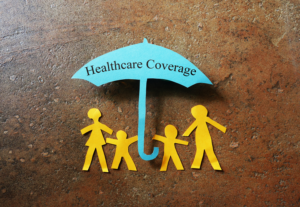
“This chapter presents the Committee’s review of studies that address the impact of health insurance on various health-related outcomes. It examines research on the relationship between health insurance (or lack of insurance), use of medical care and health outcomes for specific conditions and types of services, and with overall health status and mortality. There is a consistent, positive relationship between health insurance coverage and health-related outcomes across a body of studies that use a variety of data sources and different analytic approaches. The best evidence suggests that health insurance is associated with more appropriate use of health care services and better health outcomes for adults.”
 “For many years, KFF polling has found that the high cost of health care is a burden on U.S. families, and that health care costs factor into decisions about insurance coverage and care seeking. These costs and the prospect of unexpected medical bills also rank as the top financial worries for adults and their families, and recent polling shows that lowering out-of-pocket health care costs is by and large the public’s top health care priority. Health care affordability is also one of the top issues that voters want to hear presidential candidates talk about during the 2024 election. This data note summarizes recent KFF polling on the public’s experiences with health care costs. “
“For many years, KFF polling has found that the high cost of health care is a burden on U.S. families, and that health care costs factor into decisions about insurance coverage and care seeking. These costs and the prospect of unexpected medical bills also rank as the top financial worries for adults and their families, and recent polling shows that lowering out-of-pocket health care costs is by and large the public’s top health care priority. Health care affordability is also one of the top issues that voters want to hear presidential candidates talk about during the 2024 election. This data note summarizes recent KFF polling on the public’s experiences with health care costs. “
 “More than two out of five working-age adults report being charged for a health service that they thought was free or covered by insurance and fewer than half challenged those bills by contacting their provider or insurer.
“More than two out of five working-age adults report being charged for a health service that they thought was free or covered by insurance and fewer than half challenged those bills by contacting their provider or insurer. “If you’re steamed to discover your favorite doctor is no longer in your Medicare Advantage plan’s network, now is the time to make a change.
“If you’re steamed to discover your favorite doctor is no longer in your Medicare Advantage plan’s network, now is the time to make a change.